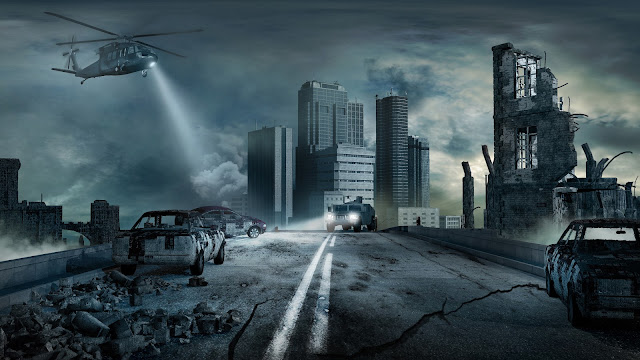Communications for Survivalists
Survivalist / prepper communication usually assumes a long-term failure of local infrastructure (i.e. no cellular network, no Internet). While there are number of references for emergency communications, there are a few that are more focused on survivalist (prepper) communications. Every family / group should establish their own communications plan, and then test and practice that plan on a regular basis. The following references may be of value in your communications planning.
Amateur Radio Emergency Communications Guidebook by Dr. John A. Allocca, WB2LUA http://www.wb2lua.com/papers/Ecom_Guidebook.pdf
Amateur Radio Emergency Communications Guidebook by Dr. John A. Allocca, WB2LUA (Part-2 Technical)
http://www.va3rom.com/docs/Amateur%20Radio%20Emergency%20Communications%20Guidebook%20Part%202%20-%20Technical.pdf
AmRRON SOI https://www.scribd.com/document/341207422/Communications-SOI-Version-3-pdf
COMMS UP! An Introduction to AmRRON (YouTube) https://www.youtube.com/watch?v=MMkAiNy2v3k
Commo By Sparks 31 https://lvassembly.files.wordpress.com/2019/03/commo_sparks31_digital.pdf
Community and “Prepper” Communications http://radio-relay.org/wp-content/uploads/2020/03/Prepper-Comms-2020-2-28.pdf
Signals Handbook for Small Teams http://citizenmilitem.com/wp-content/uploads/2015/05/SignalsVOL_1.pdf
SHTF Survivalist Radio Frequency List https://radiofreeq.files.wordpress.com/2013/06/shtf_survivalist_radio_frequency_list.pdf (This is an example of a frequency list from 2013.)
According to the ARRL Operating Manual, 10th Edition: “In a nuclear attack scenario, wireless communications resources would be limited, and the only systems that might be usable include limited satellite communications (SATCOM), limited TV/radio broadcasting, Family Radio Service (FRS), General Mobile Radio Service (GMRS), Citizens Band (CB), Multi-Use Radio Service (MURS), HF Automatic Link Establishment (HF-ALE), and Amateur Radio.”
Of course, not all communication planning involves a major disaster or doomsday scenario. When an emergency situation arises in a remote location, the ability to communicate with outside sources of assistance can prove very valuable. The article Wilderness Communications (https://www.wemjournal.org/article/S1080-6032(11)00132-3/pdf) reviews the different types of communications technologies available to individuals in remote locations, including satellite telephones, personal locator beacons, satellite messengers, cellular telephones, and the different licensed and non-licensed 2-way radio services available for personal use. It also discusses basic radio communications techniques, emergency communication, requesting ground or air casualty evacuation, and selecting communications devices for different applications.
The NIFOG National Interoperability Field Operations Guide https://www.cisa.gov/sites/default/files/publications/NIFOG%20Ver%202.0_508%20version_FINAL_9_23_2021_%28signed%29.pdf
and the
Auxiliary Communications Field Operations Guide (AUXFOG) Version 1.1 https://www.cisa.gov/sites/default/files/publications/AUXFOG%20June%202016%20-%20508%20Reviewed%20-%20Final%20%282-16-17%29_0.pdf
are government publications that focus on interoperability of communications during disasters.
Why you need to be Licensed:
Some in the "prepper community" argue that during a SHTF situation having a radio operator's license is meaningless. This isn't actually true - licensing will still be a factor - but more importantly the knowledge that you’ll obtain while studying to get your Amateur Radio license is well worth the time and the effort. You will learn the basics of how to operate your radio, which bands are open during different atmospheric conditions, how to reliably use your radio during an emergency and how to build a variety of basic antennas. Studying for the test and going through the process of getting your license is a very effective way of ensuring that you’ll have the needed foundational knowledge when it counts. You will be far better off learning these skills now instead of haphazardly trying to figure how to use your radio during an emergency situation. If you are serious about survival communications, you should strongly consider be coming a Amateur (Ham) Radio Operator.
Ham Radio Crash Course discusses the need to be licensed in their YouTube video "I Don't Need a Ham Radio License In An Emergency!". https://www.youtube.com/watch?v=hAdtoP0psk4


.png)


Comments
Post a Comment